Nearing Retirement? Make Sure You’re Managing This Significant Risk
Insights from experienced financial professionals.
If you're avoiding looking at your 401(k) balance during periods of market volatility, you're not alone. While the S&P 500 has historically produced an average annual return of 11%, recent market downturns may be impacting your portfolio, especially if you are drawing down assets. If you are a retiree or nearing retirement, managing the sequence of return risk in your portfolio during a declining market is essential since it is a significant risk to your assets lasting through retirement.
The sequence of returns impacts investors when they are either adding to or withdrawing money from their investments, which can create risk depending the market conditions at the time. If an investor is not doing either, there is no sequence of returns risk.
However, suppose an investor is drawing down their portfolio and not contributing new capital, for example, when they're retired. In that case, there is the risk that the timing of withdrawals will negatively impact the portfolio's overall rate of return.
The sequence of the withdraws is critical to the retirement portfolio lasting the investor’s lifetime:
-
Timing is everything- the timing of the withdrawals can damage the overall return and the portfolio that may not be recoverable.
-
Withdrawals during a bear market are more damaging than during a bull market.
-
If a bear market lasts more than a few months, each withdrawal is not being offset by contributions, leaving the portfolio unable to recover what was withdrawn despite future gains.
-
The sequence of return risk can impact market-sensitive investments.
-
Diversified portfolios are less likely to be impacted by the sequence of return risk.
When is the optimal time to review your portfolio?
- When the amount of risk you're comfortable with changes. When you retire, you may want as much money as possible in your retirement accounts as you may no longer be earning a steady income. So, approaching retirement may be an excellent time to invest in lower-risk stock options depending on your situation.
- When your asset allocations are off. This may be the time to rebalance your portfolio to the appropriate percentages of stocks, bonds, cash, and other investments appropriate for your situation to monitor your return risk sequence.
Here are a few things to keep in mind before making any changes to your retirement savings portfolio:
-
Withdrawing large amounts of money from a declining portfolio could impede your portfolio’s long-term success, especially if those withdrawals happen early in your retirement. Without a regular income, you may not be able to compensate for an unsteady market by adding more to your holdings.
-
Evaluate the amount of liquid cash you have on hand. Make sure this amount is high enough for you to feel confident about your portfolio and have enough money to fund your lifestyle and any emergency expenses, regardless of market conditions.
-
Instead of making any impulsive decisions to your investment portfolio during down markets, consider adjusting your withdrawal rate, as this can strengthen your portfolios’ long-term longevity.
-
Buffer your portfolio by adding an annuity as an asset class and withdrawing more from it during market volatility versus your other retirement assets.
Remember, paying too close attention to the market and your portfolio can do more harm than good regarding your portfolio’s upward trajectory if you're anxious about market volatility. Retirement provides more time to do precisely this but resist the urge to check your accounts too often.
Your financial professional can help. Contact us if you have any questions regarding the sequence of return risk in your portfolio or adjustments you’d like to make to your retirement portfolio in a down market.
The opinions voiced in this material are for general information only and are not intended to provide specific advice or recommendations for any individual. There is no guarantee that a diversified portfolio will enhance overall returns or outperform a non-diversified portfolio. Diversification does not protect against market risk. Rebalancing a portfolio may cause investors to incur tax liabilities and/or transaction costs and does not assure a profit or protect against a loss. Fixed and Variable annuities are suitable for long-term investing, such as retirement investing. Gains from tax-deferred investments are taxable as ordinary income upon withdrawal. Guarantees are based on the claims paying ability of the issuing company. Withdrawals made prior to age 59 ½ are subject to a 10% IRS penalty tax and surrender charges may apply. Variable annuities are subject to market risk and may lose value. S&P 500 Index: The Standard & Poor's (S&P) 500 Index tracks the performance of 500 widely held, large-capitalization US stocks. All information is believed to be from reliable sources; however LPL Financial makes no representation as to its completeness or accuracy. This article was prepared by Fresh Finance. LPL Tracking # 1-05265292
Sources:
https://www.forbes.com/advisor/retirement/sequence-of-returns-risk/


